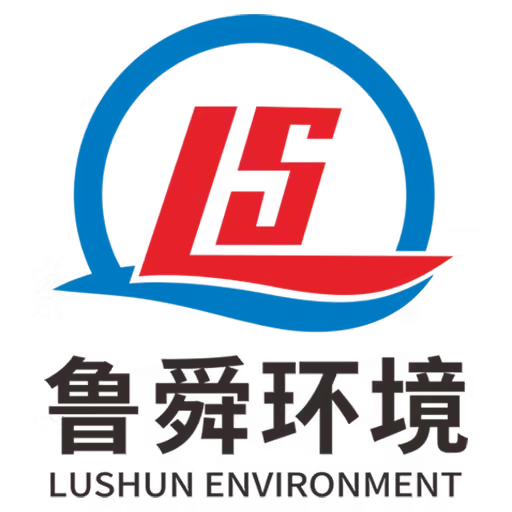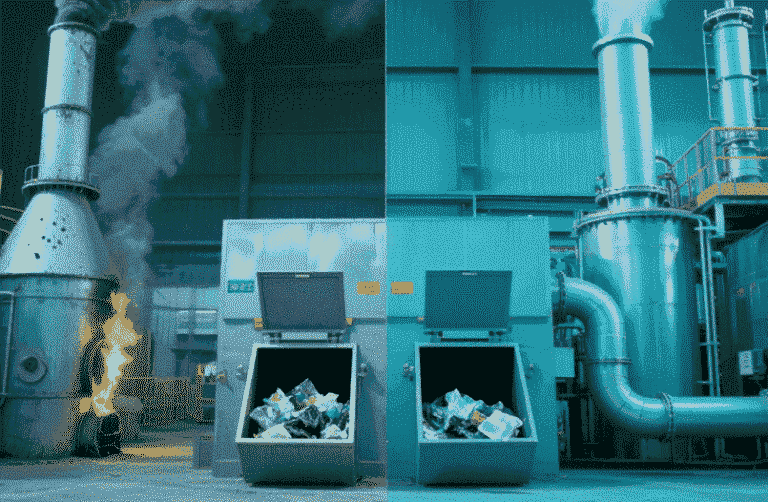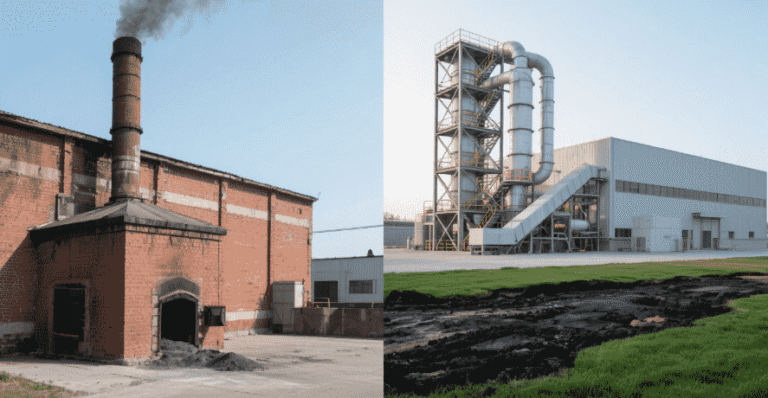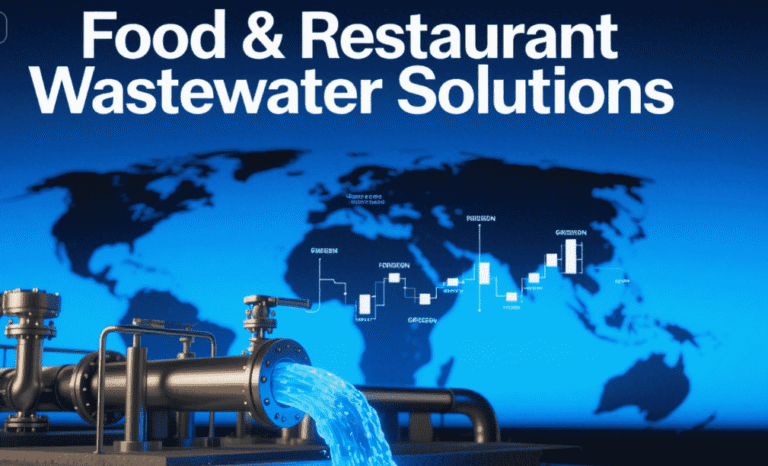Welcome to My Blog! 🌟
I’m so glad you’re here! Before we jump into the exciting content, I’d love for you to connect with me on my social media platforms. It’s where I share extra insights, interact with our amazing community, and post regular updates. Here’s how you can join the conversation:
📘 Facebook: Follow me on Facebook for more updates
Now, let’s dive into the journey ahead. I hope you find everything here both engaging and valuable. Together, let’s explore, learn, and grow! 🚀
Table of Contents
Introduction
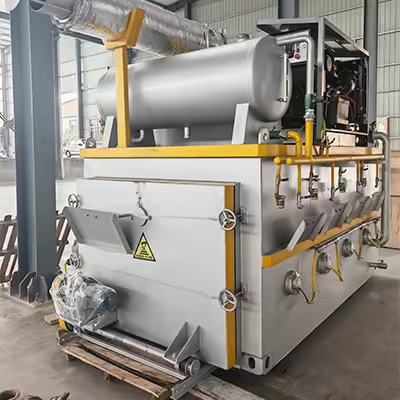
The poultry industry stands at a critical juncture in waste management. With global poultry production exceeding 130 million metric tons annually, the sector generates staggering volumes of organic waste – from daily mortality and processing byproducts to soiled bedding and feathers. Traditional disposal methods are increasingly proving inadequate, both environmentally and operationally. Landfills leach contaminants into groundwater, composting struggles with pathogen control, and rendering plants face logistical challenges. In this context, poultry incinerators have emerged as a technological breakthrough, offering a comprehensive solution that addresses sanitation, environmental compliance, and operational efficiency simultaneously.
The Growing Need for Advanced Poultry Waste Solutions
Modern poultry operations face mounting pressure from three key fronts: regulatory requirements, biosecurity concerns, and sustainability goals. Environmental agencies worldwide are tightening restrictions on agricultural waste disposal, particularly regarding greenhouse gas emissions and water contamination. Simultaneously, disease outbreaks like avian influenza have highlighted the critical importance of secure mortality disposal. Poultry incinerators meet these challenges through high-temperature combustion that achieves several vital outcomes: complete pathogen destruction, dramatic waste volume reduction (up to 95% mass reduction), and conversion of organic matter into sterile, manageable ash. Unlike open burning or burial, these systems operate within strict emission limits, making them the preferred choice for progressive poultry operations seeking long-term viability.
How Poultry Incinerators Work
The operational methodology of contemporary poultry incinerators embodies a remarkable fusion of thermodynamic engineering and environmental science. These sophisticated systems have evolved far beyond simple combustion devices, now representing integrated waste-to-energy solutions that combine precision engineering with ecological responsibility.
Primary Combustion Chamber
The primary combustion chamber serves as the foundational component where the waste transformation process initiates. Modern poultry incinerators employ several cutting-edge features in this critical zone:
Heat-resistant parasites
- Automated Feed Systems: State-of-the-art loading mechanisms utilize weight sensors and volumetric scanners to precisely regulate waste input. This automation maintains optimal combustion stoichiometry, ensuring complete oxidation while preventing overloading or oxygen starvation.
- Temperature Regulation: Advanced thermal control systems maintain chamber temperatures within the ideal 850-1,100°C range through:
- Multi-zone burner configurations
- Precision oxygen injection ports
- Real-time infrared monitoring
- Refractory Engineering: The chamber’s interior features specialized ceramic-matrix refractory linings capable of withstanding:
- Continuous high-temperature operation
- Thermal cycling stresses
- Chemical corrosion from combustion byproducts
- Pathogen Destruction: The sustained high temperatures guarantee complete inactivation of all microbial pathogens, including:
- Bacterial spores (e.g., Clostridium)
- Enveloped viruses (e.g., avian influenza)
- Heat-resistant parasites
Secondary Combustion Zone
Gases and particulates from primary combustion undergo further treatment in the secondary chamber. Here, temperatures exceed 1,100°C with residence times exceeding two seconds – a critical threshold for breaking down complex hydrocarbons and dioxins. Many systems incorporate turbulence-inducing designs to maximize combustion efficiency, ensuring complete destruction of volatile organic compounds.
Emission Control and Ash Management
The final stage demonstrates the environmental sophistication of modern systems. Multi-stage pollution control typically includes:
- Cyclonic separators for particulate removal
- Wet scrubbers neutralizing acidic gases
- Selective catalytic reduction for NOx control
- Activated carbon filters for heavy metal capture
The resulting ash, now chemically inert and sterile, finds applications as mineral supplement in construction materials or as a phosphorus-rich soil amendment, completing the waste-to-resource cycle.
Key Benefits of Poultry Incinerators
| Benefit Category | Technical Advantages | Operational Impacts |
|---|---|---|
| Biosecurity Assurance | Complete destruction of pathogens including viruses, bacteria, and prions | Eliminates disease transmission risks from mortality disposal |
| Waste Minimization | 90-95% mass reduction through complete combustion | Reduces disposal frequency and associated labor/transport costs |
| Energy Recovery | Heat exchange systems can generate hot water or preheat combustion air | Lowers overall energy expenditure for facility operations |
| Regulatory Compliance | Meets strict EPA, EU, and other international emission standards | Future-proofs operations against tightening environmental legislation |
| Operational Efficiency | Continuous feed systems allow 24/7 operation with minimal supervision | Maintains production flow without disposal bottlenecks |
Environmental and Economic Impact
Carbon Footprint Reduction
Modern poultry incinerators represent a quantum leap in sustainable waste management for the poultry industry. Extensive lifecycle assessments demonstrate that these systems outperform traditional disposal methods by reducing greenhouse gas emissions by an impressive 40-60% margin when compared to anaerobic digestion or landfilling operations. This remarkable environmental benefit stems from several key features inherent to poultry incinerator design:
- Methane Elimination: The controlled combustion process in poultry incinerators completely prevents the formation of methane – a greenhouse gas with 25 times the global warming potential of carbon dioxide. This is particularly significant as methane typically accounts for the majority of emissions from decomposing poultry waste in landfills.
- Energy Recovery Systems: Contemporary poultry incinerator models incorporate sophisticated heat recovery mechanisms that transform waste into usable thermal energy. Many facilities utilize this recovered energy to power other operations, creating a closed-loop system that further reduces reliance on fossil fuels.
- Emission Control Technologies: Advanced poultry incinerators employ multi-stage filtration systems that capture and neutralize harmful pollutants before they enter the atmosphere. These include:
- High-efficiency particulate air (HEPA) filters
- Acid gas scrubbers
- Selective catalytic reduction units
- Volume Reduction Efficiency: By reducing waste volume by up to 95%, poultry incinerators dramatically decrease the carbon footprint associated with waste transportation and land use for disposal sites.
Economic Viability
The financial case for poultry incinerators has strengthened with technological advances. While capital costs remain significant (typically 150,000−150,000−500,000 depending on capacity), the total cost of ownership proves competitive when considering:
- Elimination of rendering service fees
- Reduced waste transportation expenses
- Avoidance of environmental violation penalties
- Potential energy cost offsets
Return on investment periods typically range from 3-7 years, with longer-term savings accruing from operational efficiencies and risk mitigation.
Future Trends in Poultry Waste Incineration
The poultry incinerator industry continues to evolve with groundbreaking technological innovations that promise even greater efficiency and environmental performance:
Smart System Integration
The integration of IoT technology into poultry incinerator operations represents a major advancement. Modern systems now feature:
- Real-time combustion monitoring through networked sensors
- Automated adjustment of airflows and feed rates
- Cloud-based predictive maintenance algorithms
- Remote performance optimization capabilities
These smart poultry incinerator systems can self-diagnose operational issues and automatically adjust parameters to maintain peak efficiency, reducing downtime and improving overall performance.
Advanced Emission Controls
Emerging technologies are pushing the boundaries of poultry incinerator emission control:
- Carbon Capture: Experimental poultry incinerator designs are testing methods to isolate and store CO₂ emissions.
- Catalytic Filtration: New filter materials can achieve particulate emissions below 5 mg/m³ while capturing valuable trace elements from exhaust streams.
- Advanced Scrubbing Systems: Next-gen wet scrubbers now remove over 99% of acid gases with reduced water consumption.
Modular Design Evolution
The latest generation of poultry incinerator equipment features innovative modular configurations:
- Containerized Units: Standard shipping container dimensions allow for easy transport and installation.
- Skid-Mounted Systems: Pre-assembled components reduce installation time and costs.
- Scalable Capacity: Modular poultry incinerator designs enable operators to adjust capacity as needs change.
These advancements are making poultry incinerator technology accessible to smaller operations while maintaining the performance standards required by large-scale poultry producers. The industry is moving toward more flexible, efficient, and environmentally responsible poultry incinerator solutions that address both current needs and future challenges in poultry waste management.
Conclusion
Poultry incinerators represent more than just waste disposal equipment – they embody a fundamental shift in how the poultry industry approaches resource management. By transforming a liability into a controlled, value-generating process, these systems provide a sustainable pathway for poultry operations to meet escalating environmental expectations while maintaining economic viability. As technology continues to advance, the integration of smart controls and renewable energy synergies will further cement incineration’s role as a cornerstone of modern poultry waste management strategies.
FAQ
What maintenance does a poultry incinerator require?
A comprehensive maintenance regimen includes daily visual inspections of burners and refractory, weekly cleaning of ash collection systems, and quarterly professional servicing of emission control components. Most modern systems feature self-diagnostic capabilities that alert operators to potential issues.
How do incinerators compare to biogas systems for poultry waste?
While anaerobic digestion produces renewable energy, it requires more space, longer processing times, and doesn’t fully eliminate pathogens. Incineration offers faster, more complete waste processing with superior biosecurity – making the technologies complementary rather than competing solutions.
Can incinerators handle other farm waste beyond poultry?
Many systems are designed for multi-waste capability, safely processing swine mortality, hatchery waste, and even certain plant materials. However, feed formulations and chamber configurations may need adjustment for optimal performance with different waste streams.
What are the space requirements for an incinerator installation?
A medium-capacity unit (100-200 kg/hour) typically needs 150-200 square meters including safety clearances, ash storage, and auxiliary equipment. New vertical designs are reducing footprint requirements by 30-40% compared to traditional horizontal configurations.
How do emission control systems adapt to changing regulations?
Leading manufacturers design systems with upgradeable pollution control modules, allowing operators to retrofit additional filtration technologies as standards evolve without replacing entire units.
